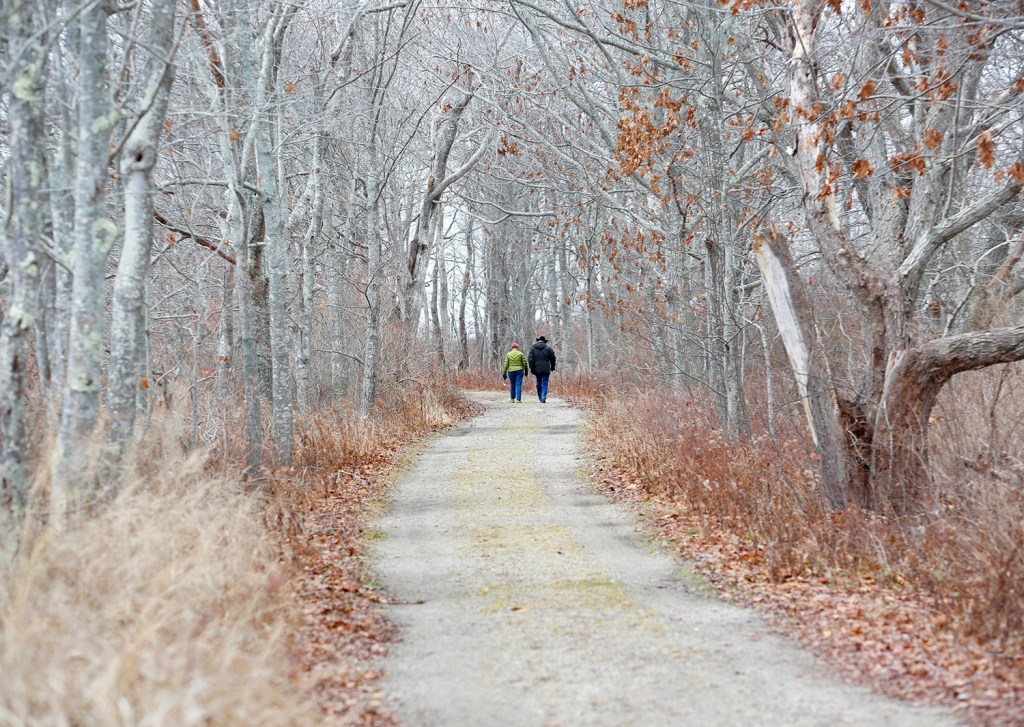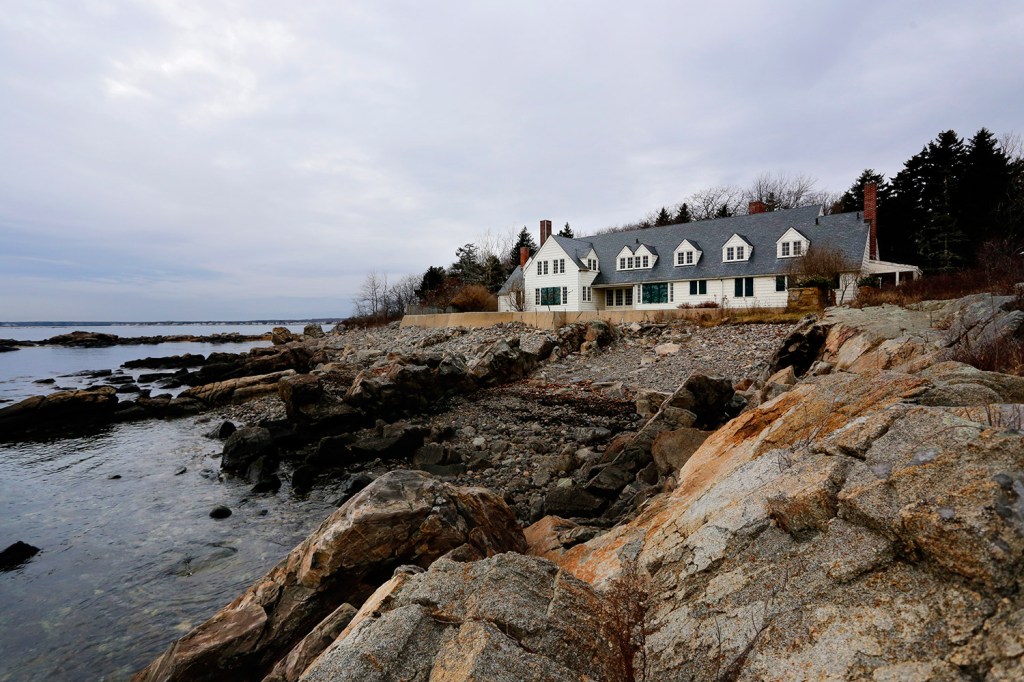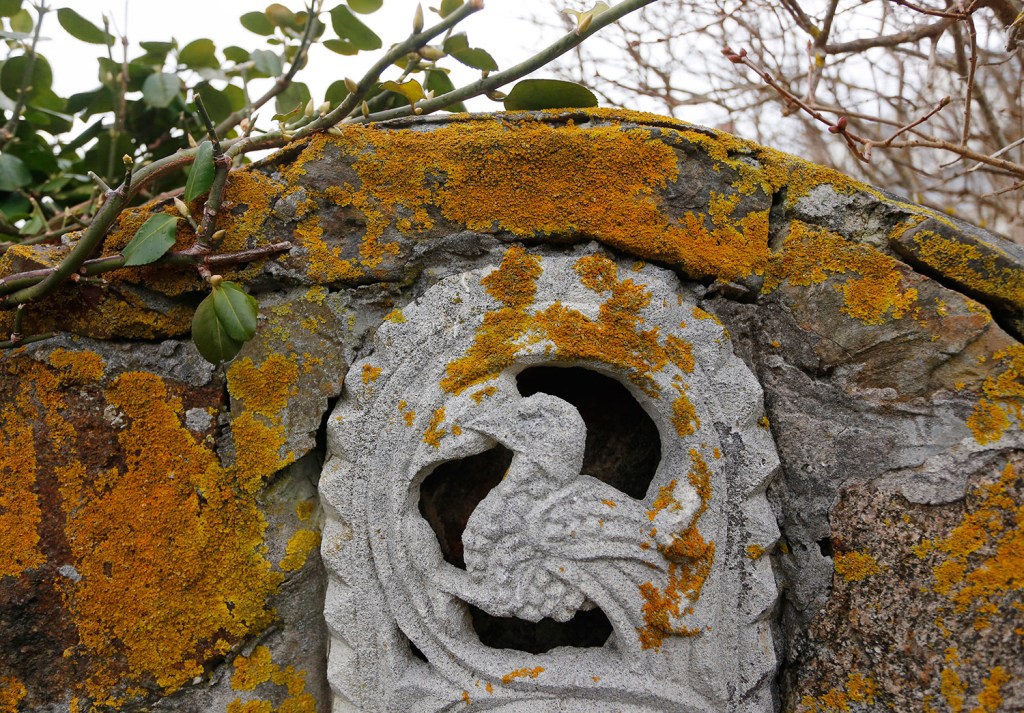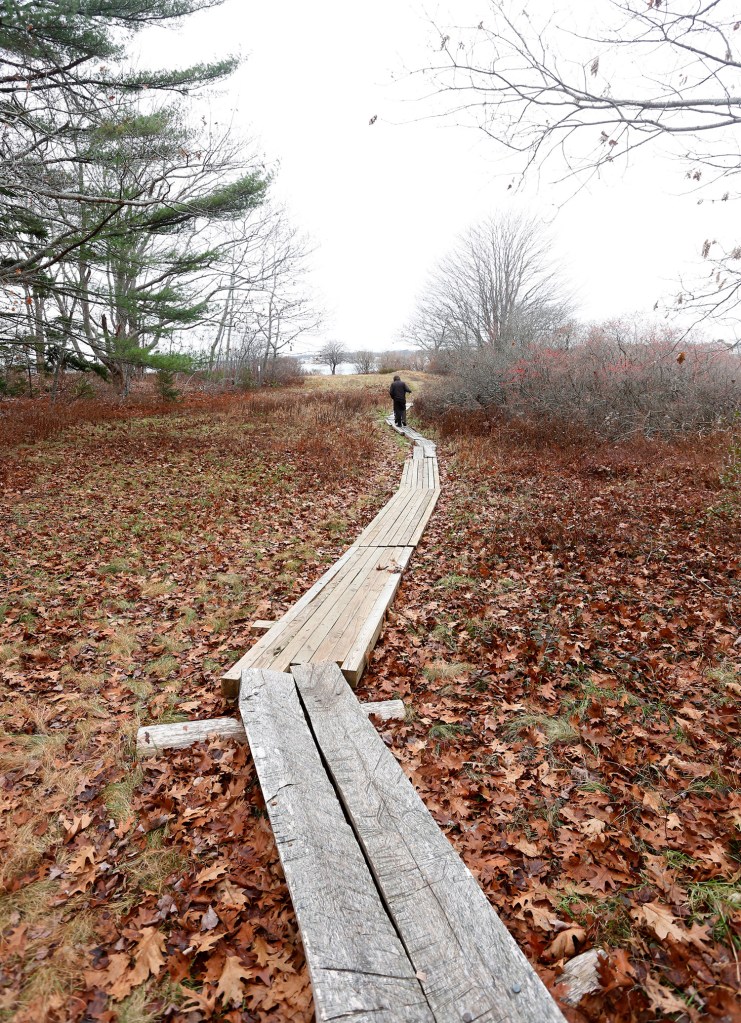BIDDEFORD — Just six parking spaces stand between a visitor to Timber Point and 110 acres of oceanfront tranquility. The parking lot is often full in the summer, but the rest of the year the refuge – which offers miles of ocean views, old-growth forest, and prime birding habitat – is largely deserted.
“It’s mostly quiet. It could stand more use,” said Ward Feurt, manager of the Rachel Carson National Wildlife Refuge system that includes Timber Point. “It’s an experience people like. They talk movingly about it.”
Timber Point was purchased for $5 million in December 2011 by the U.S. Fish and Wildlife Service, the Trust for Public Lands and the Kennebunkport Conservation Trust from a family that had owned it since the 1920s. At low tide, it is accessible from Goose Rocks Beach in Kennebunkport. Summer beachgoers hike across the mud flats by the hundreds.
But the only visitors in the fall and winter are mostly locals, said Bill Durkin, president of the Friends of Rachel Carson National Wildlife Refuge.
“It’s fantastic to go cross-country skiing or snowshoeing out there. It’s easy to get fresh tracks,” Durkin said. “Obviously being close to the water, the snow goes quick. But last year when I skied there, it was so quiet. You hear the ocean and the wind, and you don’t see anyone.
“I guess you could say it’s underused.”
The Rachel Carson National Wildlife Refuge consists of 11 parcels of land spread out across 14,600 acres from Kittery to Cape Elizabeth. It protects salt marshes and estuaries for migratory birds.
Carson, who was a marine biologist with the Fish and Wildlife Service, is credited with helping to launch the modern-day environmental movement with her 1962 book, “Silent Spring,” which focused attention on the dangers pesticides pose to declining wildlife populations. She died in 1964 of cancer at age 57; the refuge was named after her two years later.
Recent work has made Timber Point more welcoming, including construction of a birding platform and a 1.4-mile hiking trail, a part of which is handicapped accessible.
In 2016, three informational panels will be placed along the trail. A new trail also will be built to a summer home that remains on the refuge. Renovations to the outside of the house, built in the 1930s, will be completed and it will be added to the National Register of Historic Places as a historic district, Feurt said, though it will not be open to the public.
“There are lots of superlatives,” Feurt said of Timber Point. “There are 2-1/2 miles of ocean frontage, salt marshes, a rare black oak community, 13 acres of freshwater wetlands and 203 species of birds documented.”
Already, Timber Point is considered a birding hot spot. That’s what drew Jenny Green of North Danville, Vermont, and Dan Suther of Redding, California, last week during their visit to Maine. The two retirees had the refuge to themselves as they strolled the trail to the birding platform.
“Oh, it’s gorgeous,” said Green, who noted they found the refuge on a birding website.
“We saw winter waterfowl mostly, a wigeon and a mallard,” Suther added.
Refuge volunteer Steve Norris said he and his wife, Sue Keefer, have seen hooded warblers, a rare bird in southern Maine, as well as great horned owls in the daytime. And this summer they observed a Virginia rail in the freshwater marsh – a notable sighting.
Norris, who lives in Mission, Texas, and summers in Maine, said since they began volunteering at the refuge four years ago, they’ve seen use jump from 50 people on a summer weekend day to three times that.
But in the fall, he said, it’s empty. “For better or worse, it’s still a very quiet and tranquil place,” Norris said.
Send questions/comments to the editors.










Comments are no longer available on this story